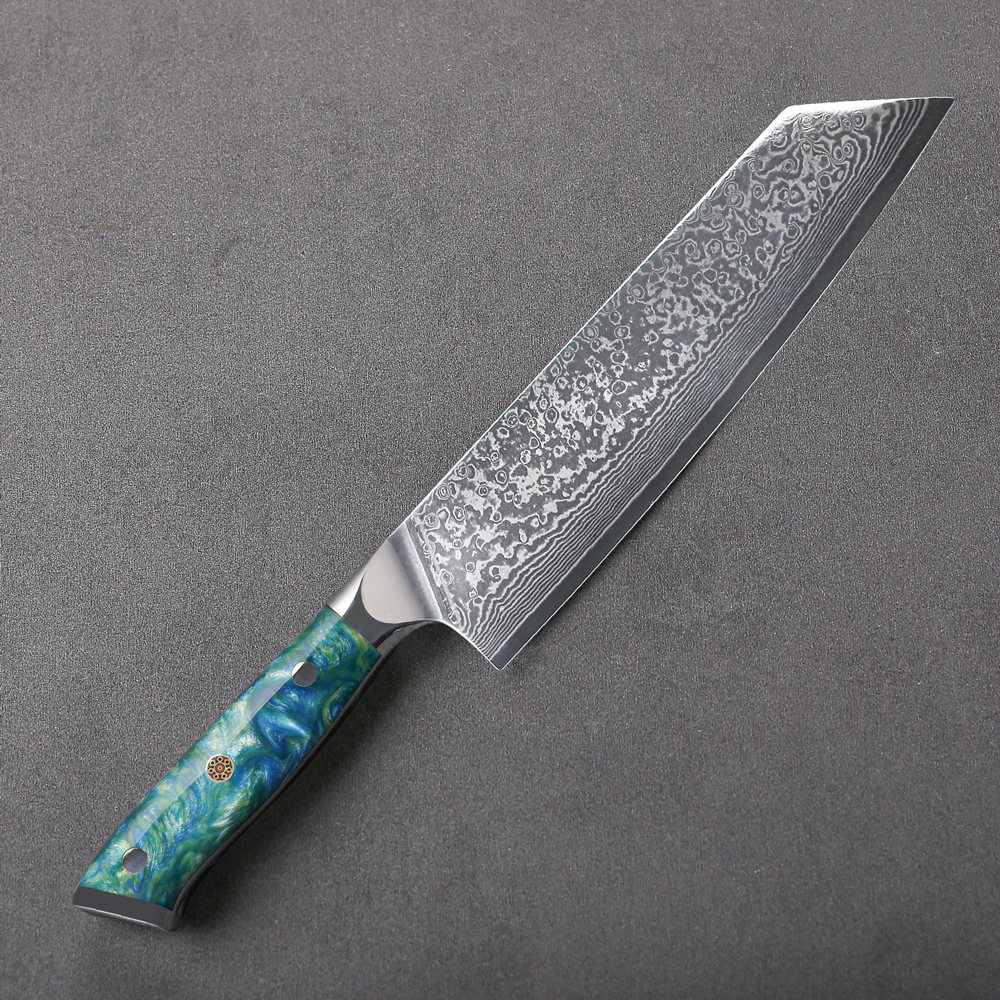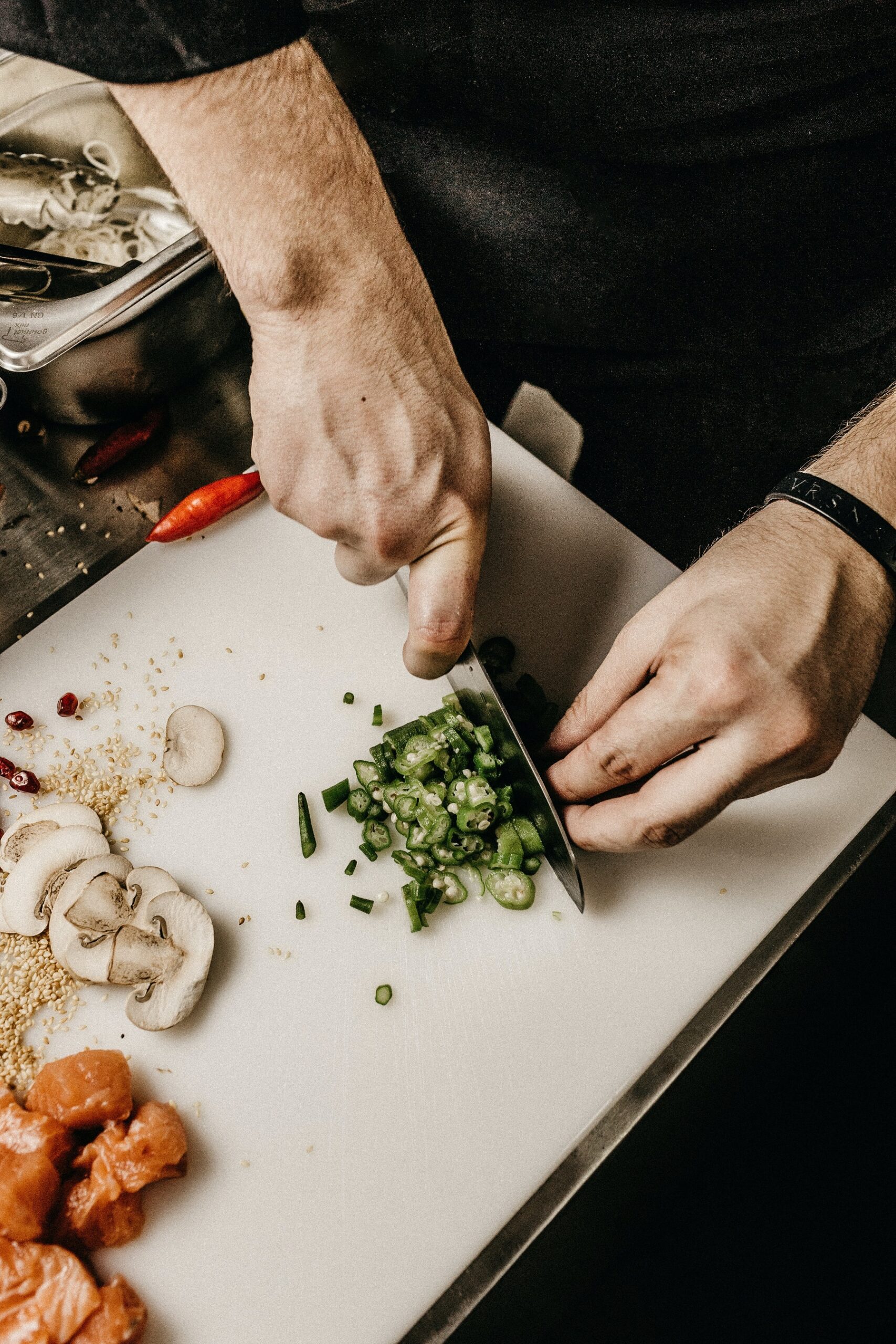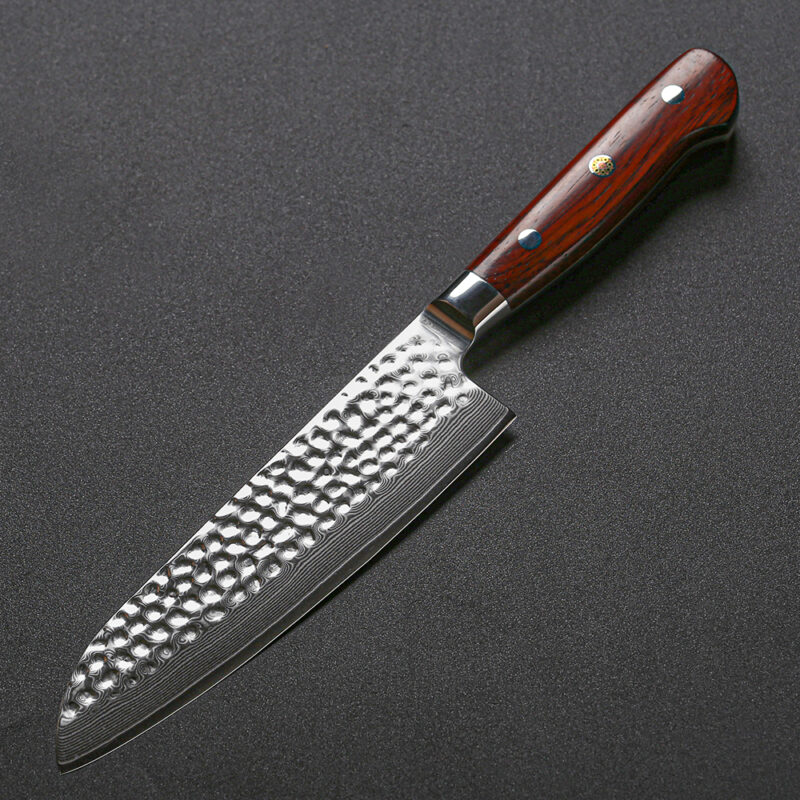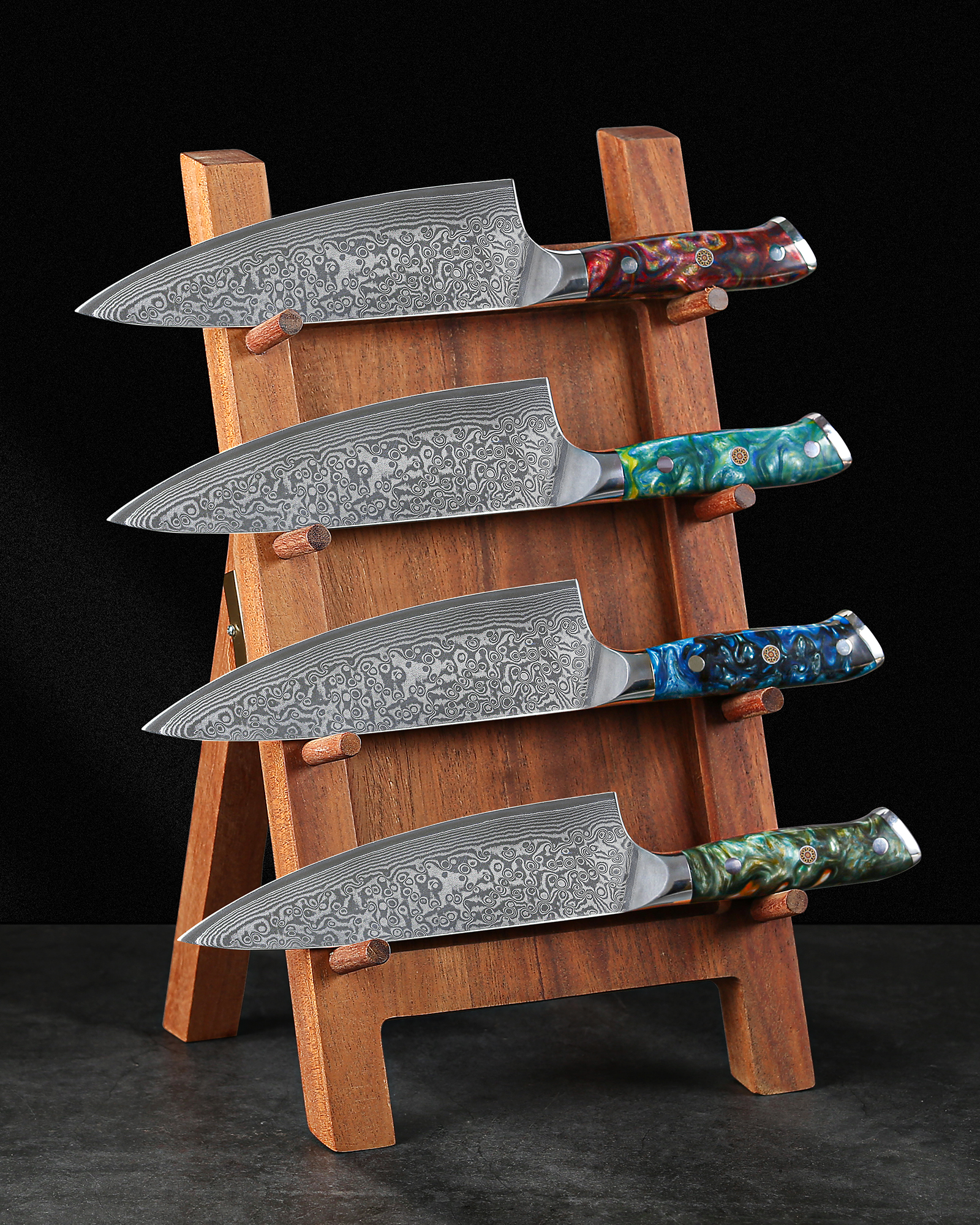Chef's Knives
How to Safely Use a Knife In the Kitchen?
Knife Safety
Knives are one of the most versatile tools in the kitchen. But like any tool, it is necessary to understand how to properly use and care for knives to avoid injuries. We are bombarded with images or video clips of celebrity Chefs effortlessly chopping and slicing, often without even looking at the food, at lightning speed. While it may be tempting to imitate this, that skill is only developed after years of careful practice.

Safe Use Of Knives In the Kitchen
Understanding Your Knife.
Knives come in all shapes and sizes. Some are versatile, some task‐specific. Some are straight, some serrated. Some are metal, some ceramic. Understanding how knives are constructed and why those differences exist will help you pick the right tool for the job.
The Basics…

Chef knives are versatile tools that can be used for most tasks. They are available in sizes ranging from 3” to 12” (8” is standard). You should choose a knife that you can grip securely – larger knives tend to fit best in larger hands.
Chef knives with forged blades can be used for heavy‐duty tasks such as cracking and chopping, while thinner, more flexible stamped blades work best for delicate tasks such as removing melon rinds.

Utility knives are used primarily for slicing. They work well with delicate foods such as fruit and small roasts or poultry.
Boning knives are specialized knives used to de‐bone poultry and smaller red meat cuts, as well as filleting fish.
Paring knives are mostly used for peeling fruits and vegetables but work well to slice small soft foods such as olives and mushrooms.
Serrated knives are not designed for cutting or chopping tasks. These are highly specialized knives that are designed for slicing bread and cakes. Slicers have less defined teeth and are “smoother” than standard serrated knives. Slicers are typically used only for carving meats.
Ways to minimise the risk
Do
- Always pick up knives by the handle. Never touch the blade, even when it is dull.
- Train employees in the safe use of knives and safe working practices when sharpening them
- Use a knife suitable for the task and for the food you are cutting
- Keep knives sharp
- Always cut on a cutting board Stabilize the cutting board with damp towel or grip-mate
- Handle knives carefully when washing up, always wipe blade from dull side
- Carry a knife with the blade pointing downwards
- Clean by hand immediately and store properly.
- Use protective equipment as required. For deboning, it is recommended that a suitable protective glove is worn on the non-knife hand, and a chainmail or similar apron is worn.
Don’t
- Leave knives loose on worktop surfaces where they can be accidentally pushed off
- Try to catch a falling knife
- Use a knife as a can opener
- Carry knives while carrying other objects
- Engage in horseplay with a knife
- Carry a knife in your pocket
- Do not place knife in sink
Storing Knives
Keep your knife sharp for a longer time by protecting the blade when it is stored. Pls, store your kitchen knives correctly after use. You can place them in countertop knife blocks, drawers, or wall-mounted magnetic strips.



